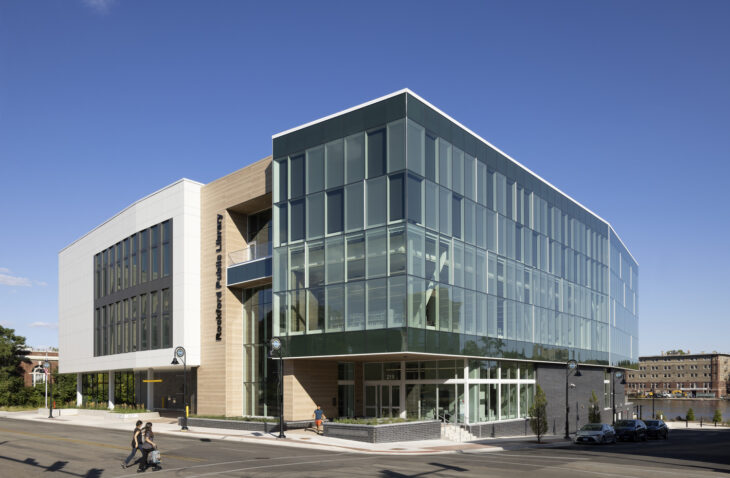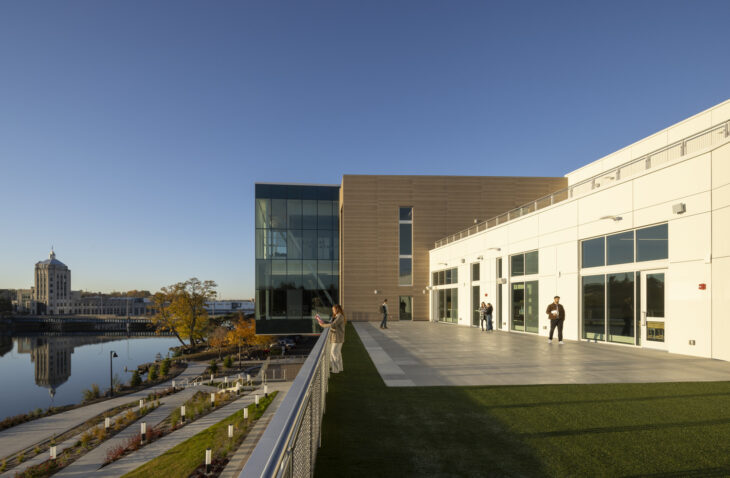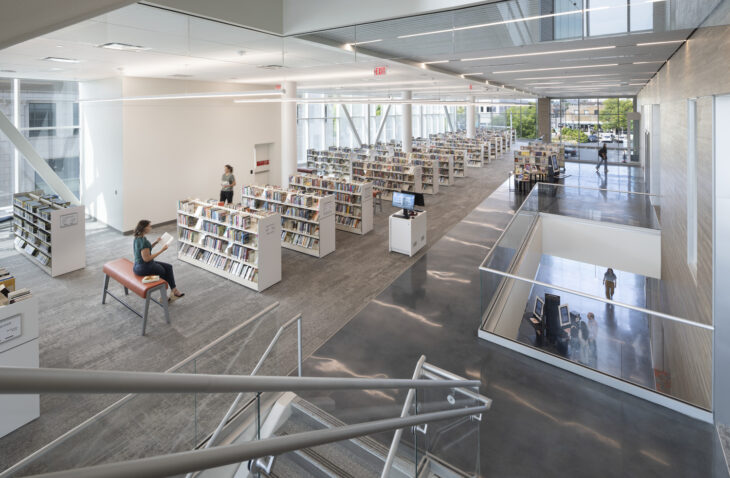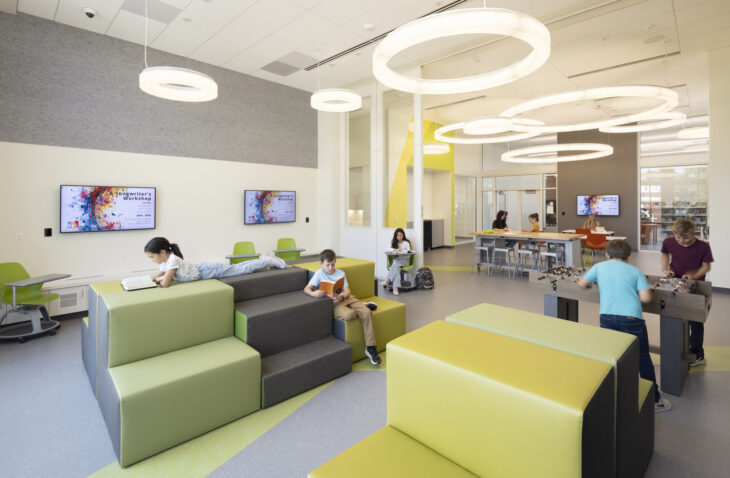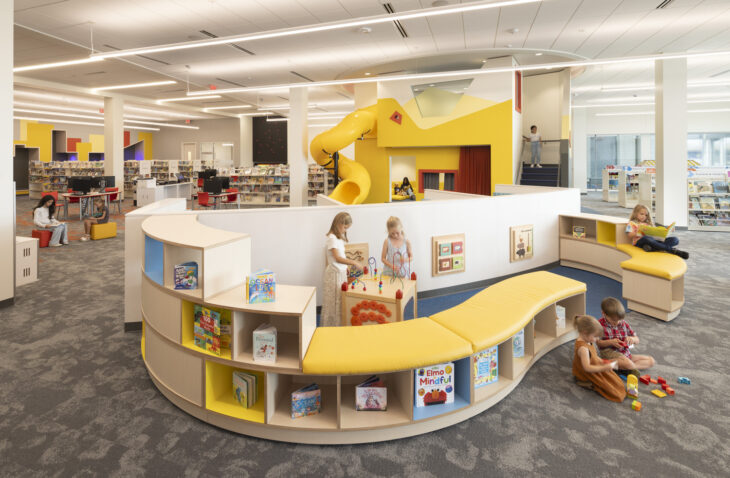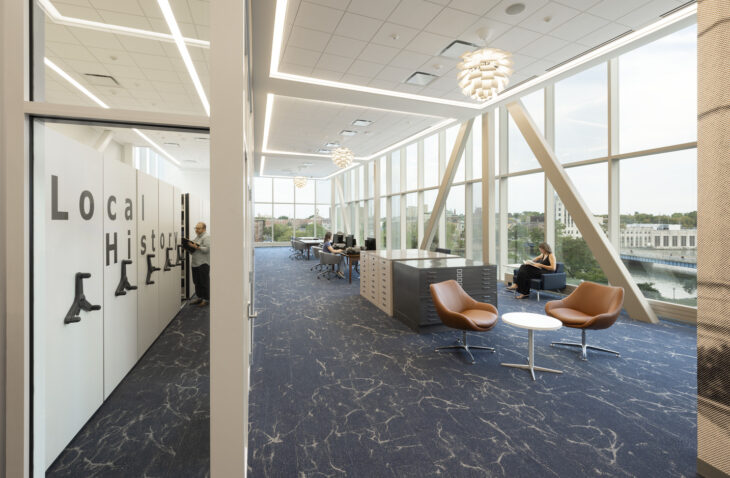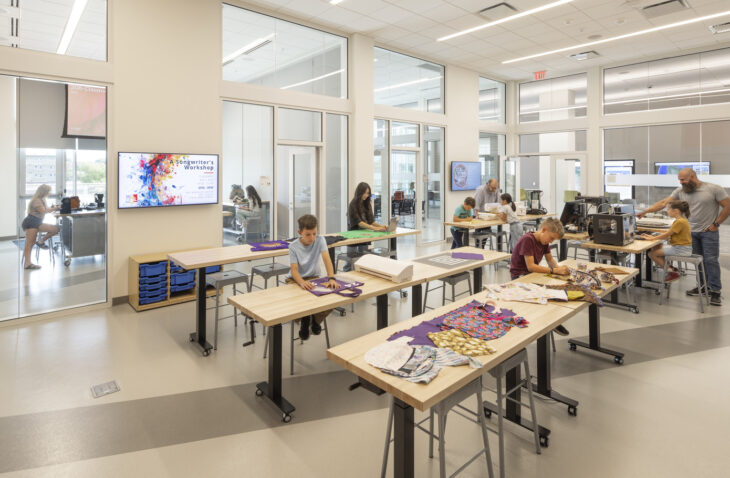New Two-story Replacement Library
The project: The new 89,000-sf, state-of-the-art Rockford Public Library features a cantilever structural system, underground parking, enhanced technology and connectivity, and a variety of event spaces, including multiple roof terraces, outdoor areas, recording studios, maker spaces, an art gallery, and large meeting rooms. The previous library, built in the 1960’s, was demolished to make way for the new state-of-the art library that will serve the community for years to come.
The goal: Design a replacement library on a former gasification site that had contaminated soil and create a technology design that is streamlined and simplifies building technology to be accessible for all users.
Project approach: The design team developed various concepts and considerations to balance the first-floor structure depth with high water table in construction, probable flood elevation, and existing grades at the street level (first floor) and parking access (lower level). Additionally, the technology designers engaged with library stakeholders to benchmark previous systems they had used to explore solutions designed to appeal to a broad and diverse patron base.
Challenge: Poor, contaminated soil. Solution: The structural design team implemented a traditional driven pile system, supplemented by micropiles in remediated areas to support traditional pile caps, mat foundations and grade beams bridging existing conditions and abandoned earth retention systems (remediation scope). This required a careful integration of temporary earth retention systems, temporary dewatering and ground plugs, and new project scope.
Challenge: Trash pick-up over the parking garage book drop-off. Solution: Structural engineers designed the book drop drive aisle (roof of parking structure) for a 75,000-pound garbage truck load while maintaining a slim structure.
Challenge: Architect envisioned sleek, thin floors, expansive glass walls, and two stories that cantilever approximately 30 feet from the main building face that bear on secondary cantilevers to create a floating glass box. Solution: Engineers crafted a unique column and two-story truss system to support the design.
The outcome: The design team’s close collaboration with the library’s leadership and the community has resulted in a space that truly meets the needs of Rockford residents and is a standout example of modern engineering and community-focused design.








